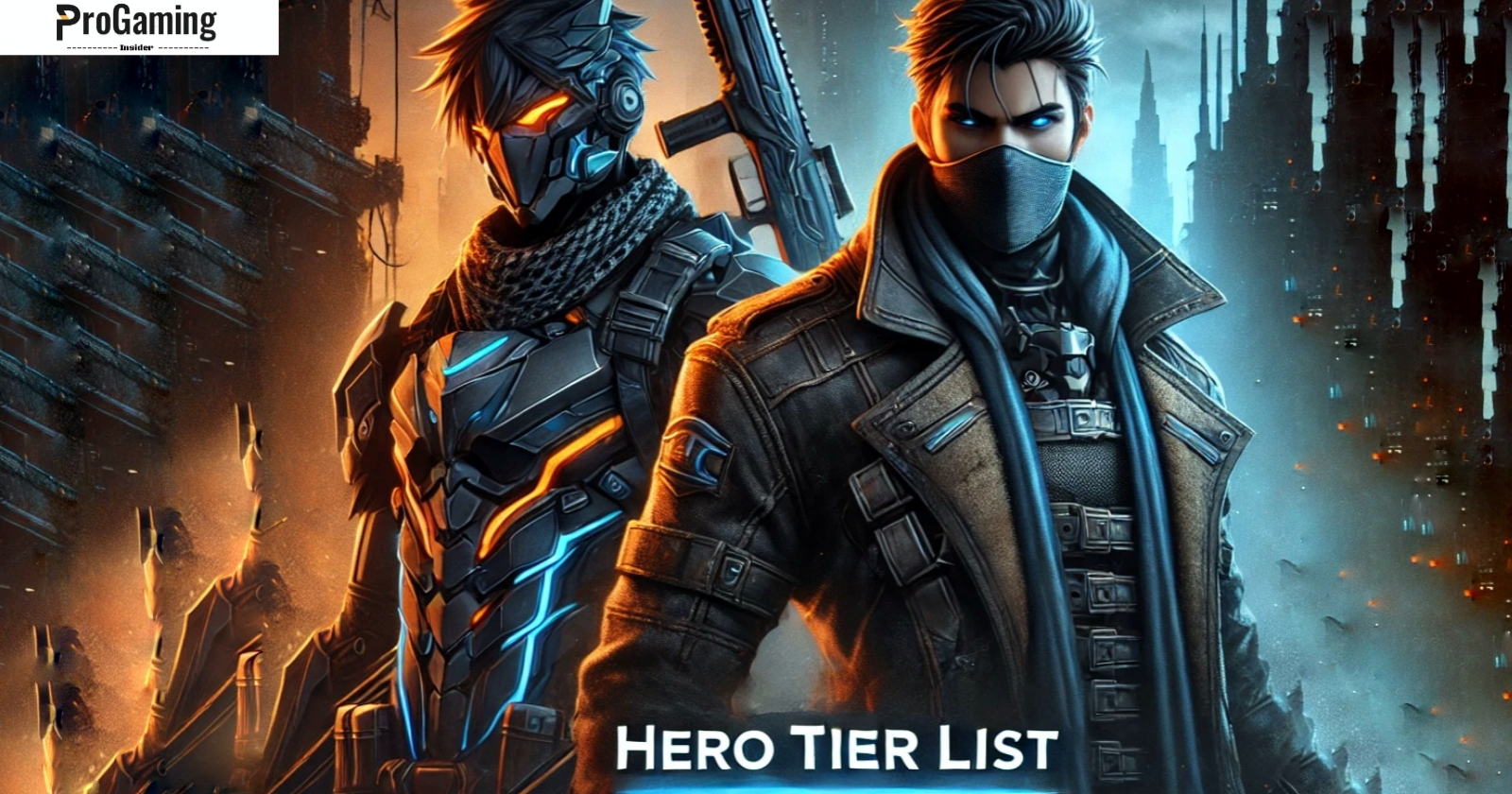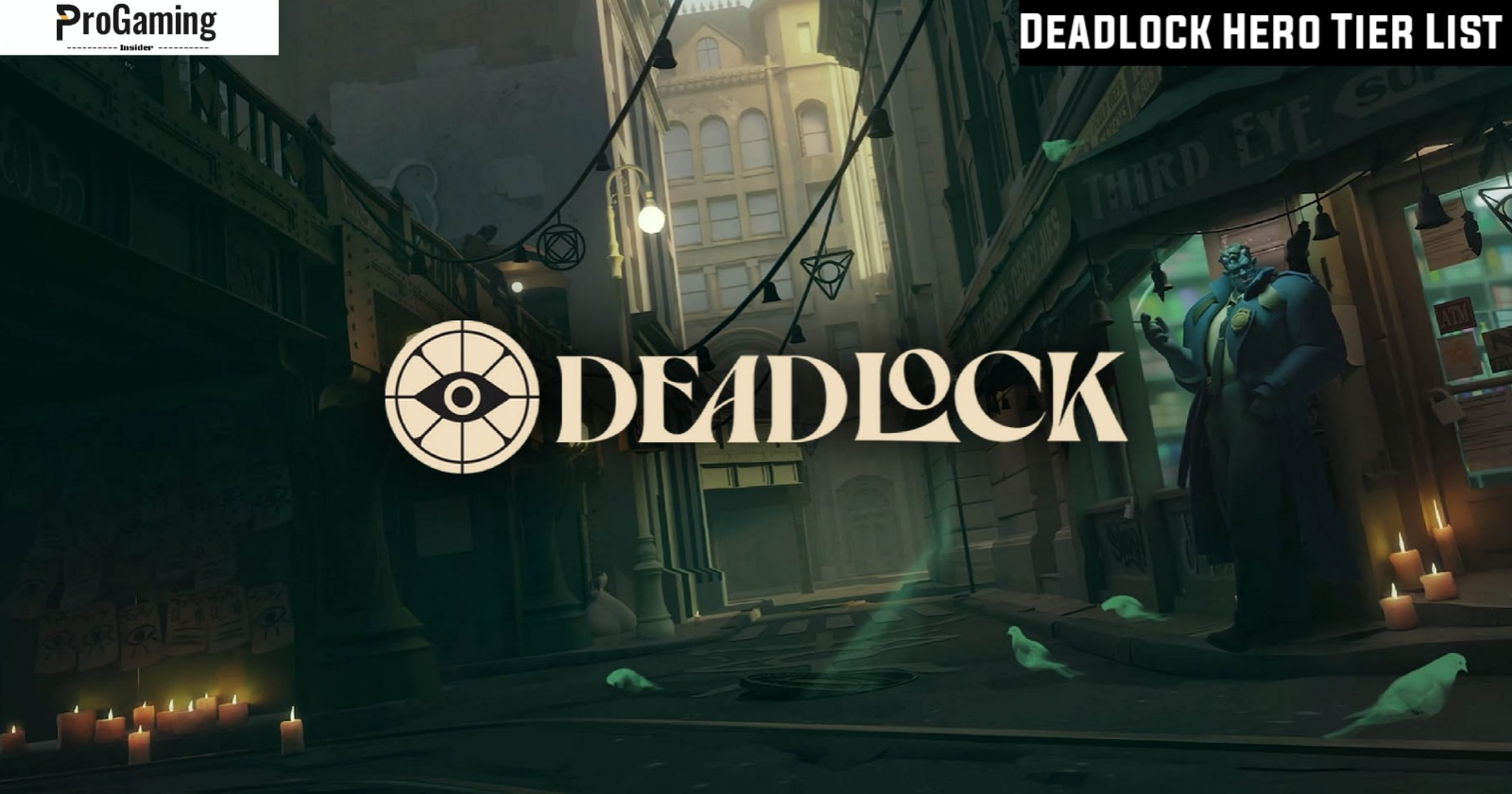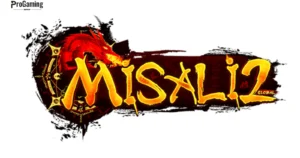Deadlock Hero Tier List: The Complete Guide for Optimal Gameplay
In the world of Deadlock, choosing the right heroes and understanding their rankings can be the keys to victory. In this guide, I’ll provide a comprehensive Deadlock hero tier list, from Tier S down to Tier C, alongside in-depth analyses, hero combinations, item builds, counters, and tips to elevate your gameplay. Whether you’re new or aiming to refine your skills, this guide will serve as your go-to resource.
Deadlock Hero Tier List
The Deadlock hero tier list is divided into four tiers—S, A, B, and C—reflecting each hero’s strengths, utility, and impact in the current meta.
S-Tier Heroes
S-Tier heroes are the most reliable choices in Deadlock, offering high-impact skills, adaptability, and significant utility. These heroes excel across various game modes and are crucial for forming a balanced and powerful team composition.
- Dynamo
Role: Tank/Support
Dynamo is an exceptional tank who also brings valuable support abilities to his team. He provides shields, heals, and movement speed buffs, making him a powerhouse in sustaining his allies during prolonged fights. His crowd control abilities, combined with his defensive utility, make him perfect for objective-based gameplay, where he can support teammates while denying entry to enemies.
- Shiv
Role: DPS
Shiv is known for his high DPS, mobility, and durability. He is a relentless character who is difficult for enemies to escape from, especially in the late game when his damage scales significantly. His aggressive playstyle and ability to chase down foes make him ideal for players who want to dominate through raw power and mobility.
- Haze
Role: Versatile DPS
Haze is a versatile hero capable of ambushing enemies and quickly eliminating high-priority targets. She is most effective when equipped with scaling items, as they enhance her damage and survivability, allowing her to transition smoothly into the late game. Haze’s stealth and burst capabilities make her a fearsome presence on the battlefield.
A-Tier Heroes
A-Tier heroes are strong contenders who can perform exceptionally well with the right team support or specific strategies. They may not have the flexibility of S-Tier heroes but can still play crucial roles in well-coordinated setups.
- Pocket
Role: DPS
Pocket is a high-damage character who can disrupt enemy healing and initiate fights effectively. She is powerful in 1v1 engagements but relies on her team to cover her weaknesses in larger skirmishes. With her burst damage and anti-heal abilities, Pocket is a great choice for countering tanky enemies or disrupting key opponents.
- Viscous
Role: Tank/Support
Viscous is a durable disruptor who protects his team with debuff purges and knock-up abilities. His defensive abilities can keep teammates alive, though he is most effective with strong team support. Viscous excels in defensive plays and can be a crucial protector in close fights.
- Seven
Role: Farming and Damage Scaling
Seven has powerful farming and pushing abilities that help him scale into the late game. With his damage scaling and stuns, he is a straightforward pick for players who want a strong presence on the battlefield. When properly itemized, Seven becomes a major threat and can easily carry a team.
- Vindicta
Role: Ranged DPS
Vindicta is a ranged hero capable of accumulating resources quickly and dealing consistent damage from a safe distance. She performs well when positioned carefully and can deal high damage if left unchecked. Vindicta’s strategic positioning is essential to her success, as she thrives by avoiding direct engagements.
- Mo & Krill
Role: Tank/Initiator
This duo has strong initiation abilities and tankiness, making them perfect for starting fights and creating opportunities for teammates to secure kills. While Mo & Krill have solid survivability, they benefit most from having strong allies to capitalize on their engagements.
- Abrams
Role: Melee Tank
Abrams is a close-range tank with lifesteal and mobility, which makes him difficult to deal with without anti-heal strategies. His resilience and ability to disrupt foes allow him to survive longer in fights, giving his team an edge when positioned well.
- Kelvin
Role: Crowd Control Specialist
Kelvin thrives with his mobility and crowd control abilities. He excels at trapping and slowing down opponents, disrupting enemy positioning, and frustrating attackers. Despite recent nerfs, Kelvin’s toolkit remains highly effective for controlling engagements, allowing his team to secure objectives and eliminate foes with ease.
B-Tier Heroes
B-Tier heroes have valuable skills but may be more challenging to master or require specific team setups to perform well. They’re great situational picks and can be effective with the right strategies.
- Paradox
Role: Support/Disruptor
Paradox relies on smart positioning to control the battlefield but lacks late-game scaling, which limits her impact in longer fights. Her skills are best utilized in mid-game engagements and for setting up plays for her team.
- Lash
Role: DPS
Lash brings high mobility and burst damage, but his ultimate ability can be avoided if enemies maintain their distance. He is excellent for quick engagements but requires careful timing to maximize his output.
- Wraith
Role: Pusher/DPS
Wraith excels at dealing damage and pushing lanes, though he struggles in team fights without backup. He is a great pick for players looking to control the map early on, but he needs support to remain effective later in the game.
- Bebop
Role: Disruptor
Bebop is a strong choice for beginner to intermediate players, with a reliable hook ability that can disrupt enemies’ positioning. He has utility in early fights, though his effectiveness diminishes as the game progresses.
- Infernus
Role: Early-Game DPS
Infernus thrives in the early game, where he can quickly establish dominance. However, he requires a strong advantage early on to stay relevant in the late game, making him a high-risk, high-reward pick.
- Yamato
Role: DPS/Lifesteal
Yamato offers high damage output and lifesteal, but he requires careful timing and cooldown management to maximize his potential. Players who can master his rhythm will find him rewarding, though he struggles against highly coordinated teams.
C-Tier Heroes
C-Tier heroes have limited impact in most situations, often requiring specific circumstances or team compositions to succeed. While they can be useful, they’re generally outperformed by higher-tier heroes.
- Lady Geist
Role: Duelist
Lady Geist shines in one-on-one fights but lacks the mobility and team-fighting capabilities to be effective in larger skirmishes. She’s best used for solo pick-offs rather than extended engagements.
- Warden
Role: High-DPS
Warden can deal substantial damage if left unchecked, but he lacks team utility and is often vulnerable in group fights. His value lies in isolated situations, where he can focus on dealing consistent damage.
- Ivy
Role: Support
Ivy is a support-focused hero with limited impact on team fights. While her healing abilities can be beneficial, she doesn’t provide enough utility to change the course of engagements.
- Grey Talon
Role: Lane Control
Grey Talon offers lane control and a powerful ultimate, though he falls behind in the game if he isn’t well-fed. He’s best used in situations where he can gain an early advantage, but he struggles to keep up without it.
- McGinnis
Role: Support/Disruptor
McGinnis relies heavily on items and team support to be effective. With limited mobility and notable vulnerabilities, he is easily outclassed by higher-tier supports.

In-Depth Analysis of Each Tier: S, A, B, and C
S Tier Analysis
- Strengths: These heroes typically have high durability, crowd control, and self-sufficiency. Their skills allow them to perform well without heavy team support.
- Weaknesses: The main drawback of S-tier heroes is that they are often targeted first due to their high impact in matches.
A Tier Analysis
- Strengths: Heroes in this tier can hold their own with strategic positioning and make strong contributions in team settings.
- Weaknesses: A-tier heroes tend to lack the versatility of S-tier heroes, relying more on team coordination to unlock their full potential.
B Tier Analysis
- Strengths: B-tier heroes are usually reliable in early to mid-game phases. They may have strong abilities but often require the right setup to thrive.
- Weaknesses: B-tier heroes can fall off in late-game as their abilities scale less effectively compared to S and A tiers.
C Tier Analysis
- Strengths: C-tier heroes have niche roles or specific abilities that can be advantageous in certain scenarios.
- Weaknesses: C-tier heroes are harder to integrate into standard team compositions and can be easily countered by higher-tier heroes.
Best Hero Combinations for Team Synergy
Team synergy is essential in Deadlock, and the right hero combinations can give you a significant advantage. Here are some recommended combinations:
- Dynamo + Shiv: This pairing combines Dynamo’s CC and healing with Shiv’s AOE damage, creating a balanced, high-impact combo.
- Haze + Kelvin: Haze’s ambush potential complements Kelvin’s tanking abilities, allowing them to target high-value enemies while controlling the battlefield.
- Pocket + Viscous: Pocket’s one-on-one prowess, paired with Viscous’s crowd control, makes them a formidable force.
Item and Skill Build Recommendations for Each Hero
Choosing optimal items and skills for each hero can improve your game significantly. Here’s a look at what each hero type benefits from:
- Dynamo: For Dynamo, prioritize health-boosting items to enhance his tanking role. Items that reduce cooldowns are also helpful to maximize his healing and CC abilities.
- Shiv: Shiv thrives with items that increase critical damage and mobility, allowing him to dish out damage while staying elusive.
- Kelvin: Items that improve defense and stun duration are essential, enabling Kelvin to withstand enemy damage and control the fight.
Counters and Weaknesses of Top-Tier Heroes
Knowing the counters to top-tier heroes can turn the tide in a challenging match. Here’s a quick rundown on countering popular choices:
- Countering Dynamo: Anti-heal items and heroes with stuns can prevent him from using his abilities effectively.
- Countering Shiv: Stun-based heroes can keep Shiv from building rage and unleash CC abilities to control him.
- Countering Haze: Use AOE abilities to reveal her position and keep her from sneaking up on valuable team members.
Gameplay Tips and Strategies for Climbing Ranks
Climbing the ranks in Deadlock requires strong skills, game awareness, and strategy. Here are some core tips:
- Map Awareness: Knowing where your opponents are at all times can prevent ambushes and help you position your heroes effectively.
- Focus on Team Communication: Use in-game communication features to coordinate attacks and item purchases with teammates.
- Adaptability: Remain flexible and adjust your strategy based on enemy team composition. Counter-building and swapping heroes as needed can give you a strategic edge.
Conclusion
Mastering the Deadlock hero tier list involves not only selecting high-tier heroes but also understanding each hero’s abilities, counters, and ideal team combinations. By applying these strategies and tips, you’ll be well on your way to climbing the ranks and leading your team to victory.
FAQs
1. Which hero is the best for beginners in Deadlock?
> For beginners, Shiv is a great option, as his durability and mobility allow for high damage output with minimal risk.
2. How do I counter Kelvin effectively?
> Kelvin can be countered by heroes with high stun potential or abilities that reduce movement speed. Focus on keeping him controlled to prevent him from tanking for his team.
3. What are the best team compositions for ranked play?
> Combining Dynamo for tanking, Shiv for DPS, and Viscous for support gives you a balanced team. This combination allows for durability, healing, and high AOE damage.
4. Are C-tier heroes worth using in ranked matches?
> C-tier heroes can still be viable with the right team setup but may require extra coordination to maximize their utility.
5. How often is the Deadlock hero tier list updated?
> The tier list changes periodically with game patches and balance adjustments. Check for updates to stay on top of the meta and adjust your hero selection accordingly.
6. What are the easiest ways to climb ranks in Deadlock?
> Effective team coordination, understanding hero counters, and maintaining strong map awareness are key strategies for ranking up quickly.




